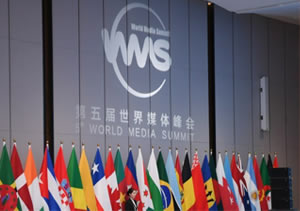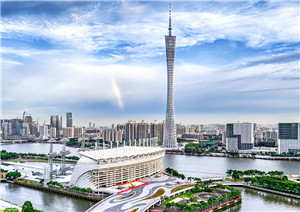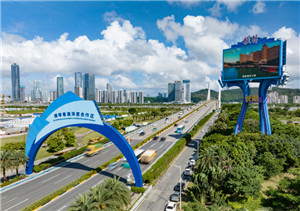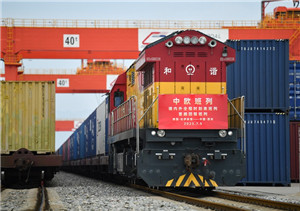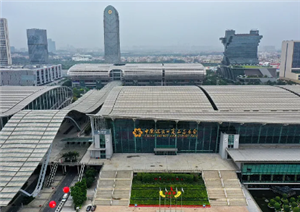California, home to the San Francisco Bay Area, is a state with a rich history of Chinese immigration. San Francisco, in particular, boasts one of the highest Chinese populations in the US, and its Chinatown is the oldest in North America, founded by Chinese immigrants—many from Guangdong—who arrived during the 19th-century Gold Rush.
Chinese communities have served as a natural bridge between Guangdong and California over the years. According to Huang Bojun, vice-president and secretary general of the Jiangmen Overseas Chinese History Society, California has the largest Chinese population of any US state, with the majority being of Guangdong descent.
In recent years, the political presence of Chinese Americans in California has grown significantly, producing figures such as Ed Lee, San Francisco's first Asian-American mayor, Judy Chu, the first Chinese-American elected to Congress, and Jean Quan, Oakland's first Chinese-American female mayor. Many of these leaders can trace their roots back to the Wuyi region of Jiangmen in Guangdong.
Historically, Guangdong and California have led the way in China-US exchanges, with numerous similarities driving their connection.
For instance, both regions have experienced similar development trajectories. Since China's reform and opening-up, Guangdong has been transformed from an agricultural province into a global manufacturing hub. Since California's Gold Rush in the mid-19th century, the US state has evolved from a colonial outpost to an agricultural powerhouse, an industrial hub and, ultimately, a global center for high-tech innovation.
The most striking commonality is that both Guangdong and California are the most populous and economically significant regions in their respective countries. Guangdong had a permanent population exceeding 127 million and a GDP of 12.9 trillion yuan ($1.81 trillion) in 2023, accounting for over one-tenth of China's economy. California, with 39 million residents, boasts a GDP of $3.6 trillion, representing one-seventh of the US economy.
Both regions are also key hubs for technological innovation and serve as vital industrial bases. Guangdong has led China's regional innovation rankings for six consecutive years, and the "Shenzhen-Hong Kong-Guangzhou Science and Technology Cluster" has ranked second globally for three years running. Similarly, California is one of the foremost technology innovation centers in the US, with one-third of the country's fastest-growing tech companies located there. Silicon Valley's high-tech exports alone account for one-third of US' total.
With such substantial economic clout, and as pioneers in emerging industries and innovation, the potential for collaboration between Guangdong and California is immense.
Economic and trade ties between the two regions have long been particularly strong in the broader context of China-US cooperation. As early as 1993, the two regions signed a joint pledge to promote cultural and economic relations and, in 2014, they formalized their friendship as sister province/state.
Economic cooperation has been a notable area of mutual benefit. Among the world's four major bay areas, the Guangdong-Hong Kong-Macao Greater Bay Area and California's San Francisco Bay Area stand out, offering broad cooperation opportunities with significant potential.
In 2023, California Governor Gavin Newsom visited China. As the first US governor to visit China in four years, his first stop was the Guangdong-Hong Kong-Macao Greater Bay Area. His visit focused on renewable energy and climate change—areas where Guangdong and California share a synchronized vision and objectives.
In the development of the electric vehicle (EV) industry, Guangdong and California are remarkably aligned. Guangdong accounts for nearly 20 percent of China's EV market share, making it the country's largest EV-producing province and home to leading companies like BYD. California, meanwhile, is North America's primary EV production hub, home to Tesla's headquarters and a key production site. It is also the largest electric vehicle market in the US.
The two regions have already begun exploring collaboration in the EV industry. For example, BYD has invested in California's Lancaster city, helping to establish North America's largest electric bus factory.
In the area of climate cooperation, Guangdong and California began working together more than a decade ago. In April 2013, a California government and trade delegation visited Guangdong, where both governments signed a Memorandum of Understanding (MoU) to enhance friendly exchanges and cooperation. Guangdong's Development and Reform Commission and California's Environmental Protection Agency also signed an MoU on low-carbon development cooperation.
In 2015, the local governments of Guangdong and California renewed their commitment to low-carbon development through another MoU, continuing the trend of China-US climate cooperation.
Joseph Nye, former US assistant secretary of defense, has said that China and the US are interdependent in terms of ecology and trade and, over the past decade, Guangdong and California have maintained an active dialogue on climate change through seminars and exchange visits.
On October 24 last year, the relevant departments of both regions signed an MoU in Guangzhou to deepen cooperation on green development. This agreement focuses on areas such as carbon markets, emissions trading and climate-related financing. According to the California governor's office, the latest MoU is a supplement to the climate cooperation framework established in 2013.
Ahead of this year's 10th anniversary of the formal establishment of the Guangdong-California sister relationship, Newsom said he hoped to further strengthen ties between the two regions.
He emphasized the importance of deepening cooperation in areas such as climate action, cultural exchange and economic development, with the aim of advancing the relationship to new heights and achieving mutually beneficial outcomes.



